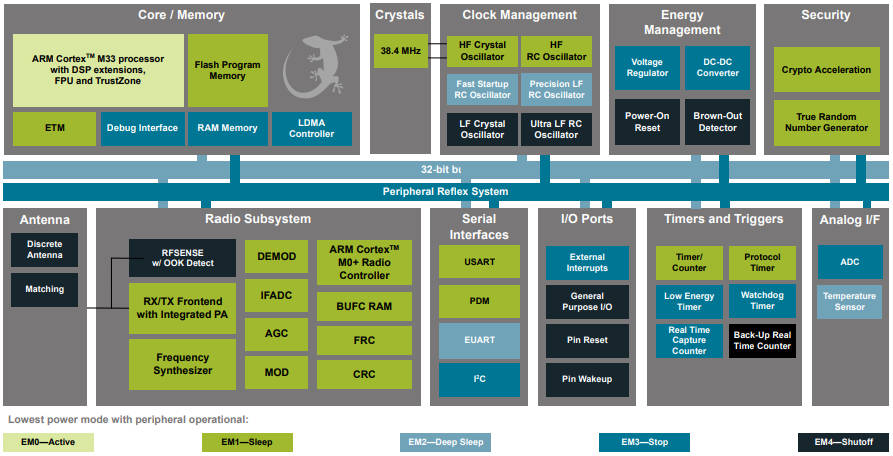Bluetooth LE 5.2 chip is 6 x 6mm
by Steve BushSilicon Labs has launched a pair of Bluetooth Low Energy system-in-packages:

- BGM220S is small – 6 x 6mm 1.1mm tall
- BGM220P is slightly larger, optimised for greater range
“BGM220S and BGM220P are among the first Bluetooth modules to support Bluetooth Direction Finding, all while delivering up to ten-year battery life from a single coin cell,” according to the company.
The small ‘S’ version will come in three types, all with a Bluetooth 5.2 stack.
- BGM220SC12WGA2: 0dBm transmit, 38.4MHz processor, -40 to 85°C, no direction finding
- BGM220SC22HNA2: 6dBm transmit, 76.8MHz processor, -40 to 105°C, includes direction finding
- BGM220SC22WGA2 6dBm transmit, 76.8MHz processor, -40 to 85°C, no direction finding
The processor is a 32bit Arm Cortex-M33 with DSP instructions and floating-point unit, with up to 512kbyte flash programme memory and 32kbyte RAM data memory. There is an embedded trace macro-cell for debugging.
Receiver sensitivity (0.1% BER) can be:
- -106.4dBm at 125kbit/s GFSK
- -102.3dBm at 500kbit/s GFSK
- -98.6dBm at 1Mbit/s GFSK
- -95.9dBm at 2Mbit/s GFSK
Operation is across 1.8 to 3.8V, and nominal consumption is 4.2mA in the receiver at 1Mbit/s GFSK and 4.6mA in the transmitter with a 0dBm output – dropping to 26µA/MHz in EM0 active mode (see bottom of diagram) and 1.40μA in deep sleep (EM2) with the RTCC running from LFXO and RAM retained.
Security features include secure boot with root-of-trust and secure loader, hardware crypto acceleration for AES128/256, SHA-1, SHA-2 (up to 256bit), ECC (up to 256-bit), ECDSA and ECDH. Then there is Arm’s TrustZone, a true random number generator (TRNG) is compliant with NIST SP800-90 and AIS-31 and secure debug with lock/unlock.
On the microcontroller side, peripherals include timers (with PWM), lots of serial, a 12bit 1Msample/s ADC, also a 16bit 76.9ksample/s ADC and a digital microphone interface.